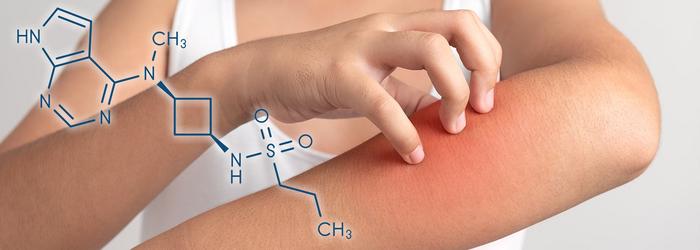Recently, U.S. Food and Drug Administration approved for prurigo nodularis (PN), nemolizumab (Nemluvio, Galderma) improved signs and symptoms of atopic dermatitis for more than one year, according to the ARCADIA open-label extension study.
Nemolizumab (Nemluvio) specifically inhibits interleukin (IL)-31 cytokine signaling, which is known to drive itch and is involved in inflammation.
The new data was presented at the European Academy of Dermatology and Venereology (EADV) Congress in Amsterdam.
For the study, patients with previous nemolizumab experience or who were nemolizumab-naïve in lead-in studies received 30mg subcutaneous nemolizumab every four weeks up to Week (W) 200 with background topical corticosteroids of low/medium potency or topical calcineurin inhibitors. Efficacy assessments included the proportion of patients achieving an Investigator’s Global Assessment (IGA) score of 0/1 (clear/almost clear) and an Eczema area and severity index (EASI) score of -75 (75% improvement in EASI score), changes in the SCORing Atopic Dermatitis (SCORAD) score (including itch and sleep Visual analog scale [VAS] components), and quality of life (QoL). Results of the Week 56 data cut-off are presented.
Of 1740 patients, 723 patients completed Week 56 at data cut-off. At baseline, the proportion of patients with previous nemolizumab experience and nemolizumab-naïve patients with IGA 0/1 was 29% and 18%, and with EASI-75 was 38% and 24%, respectively. At Week 56, IGA 0/1 was achieved in 47% and 49% and EASI-75 in 73% and 79% of patients with previous nemolizumab and nemolizumab-naïve patients, respectively. Improvements in itch, sleep, and QoL were also observed over time.
The safety profile was consistent with that previously reported, the study showed.
Lead Investigator of the ARCADIA long-term extension study Diamant Thaçi, MD, Professor and Head Comprehensive Center for Inflammation Medicine University Luebeck, Germany, chatted with TDD about the study results and what role nemolizumab may play in treating AD in the future.
TDD: What’s the main takeaway from this study?
Diamant Thaçi, MD: “Nemolizumab was always expected to be an excellent drug in PN because it’s known as a very good target for itch. It was always considered as a drug which has primary effects on itch, but the secondary effect on inflammation is there. We showed data for the first time that it was really shown to have a continuous improvement in the long-term management of atopic dermatitis where we have not only maintenance of the treatment response in a long-term extension trial, but we have also an increase of patients who achieve EASI 75, IGA 0/1. It was remarkable to see also a very high number of patients who achieve EASI 90.”
TDD: If approved in AD, what patients may benefit most from nemolizumab?
Dr. Thaçi: “Nemolizumab will be an exciting component not only in PN but also in atopic dermatitis. The first aspect is fast response. Usually, the biologics are not as fast as the Janus kinase inhibitors (JAK), but nemolizumab is as fast as a JAK in improving itch. So, this is mimicking the JAKs in the improvement of the itch. If you have a patient where itch is more predominant, we have the rapidness in the response of itch. Safety is not an issue. We don’t see any conjunctivitis. So, with the right selection of the right patient, there’s a benefit in long-term management. This is a drug for the long run. This is a drug where you can manage the disease to control not only itch, but also other signs and symptoms of atopic dermatitis. It will not be a niche drug because the number of patients improving with time was very high.”
TDD: What’s next research-wise?
Dr. Thaçi: “This was an interim analysis. These were not the end results. we’ll see the long-term results, and we’ll have the full analysis. And then we can really see the power of this compound.
TDD: Is IL-31 the master itch cytokine?
Dr. Thaçi: “I think so. It is also a Th2-type cytokine. We know that IL-4 and IL-13 are in the Th2 cascade. Nemolizumab hits the target of IL31 on itch and the cascade of type 2 cytokines in general.”


